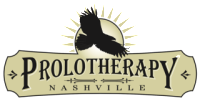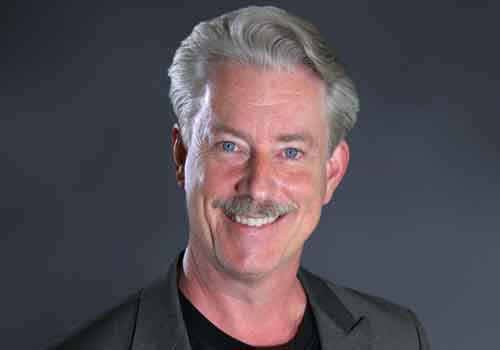STEM CELL TREATMENTS
PROLOTHERAPY NASHVILLE
STEM CELLS TREATMENT VERSUS PROLOTHERAPY AND PRP
This raises an interesting and important question: which is better to address ‘arthritic’ knees—stem cells treatments or Prolotherapy treatments. The answer to this depends on ‘what you think is wrong’. I see the current move toward stem cell treatments as ‘the’ treatment for ‘osteoarthritis’ of the knee and other joints to suffer from the same problem as joint replacement. I think that the wrong structures are the primary target of treatment. I personally think that better results are obtained by addressing the ligament structures, and in addition perhaps growing a bit of new cartilage, as opposed to making a nice, shiny (and expensive) new layer of cartilage because…what happened to the last layer of cartilage that was there? Oh…it rubbed off because the ligaments were not holding the joint surfaced in proper alignment. If you do not effectively address the underlying ligament ‘cause’ of joint destruction, what do you think is probably going to happen to the ‘new layer’ of cartilage in a few years?
And, you need to consider precisely what a ‘stem cell’ treatment accomplishes, and what triggering the connective tissue healing system accomplishes at the cellular and structural level. Stem cells are cells that can ‘differentiate’ into a variety of kinds of ‘mature’ cells, like muscle cells, gland cells, and cartilage cells (chodrocytes). Therefore, if you want to grow cartilage, you might reasonable put stem cells into the area, and they might reasonably grow a new cartilage. But, when you are trying to repair DAMAGED LIGAMENTS AND TENDONS, you need something other than ‘progenitor cells’. There are no ‘ligament cells’ that ‘make’ ligament, nor are there ‘tendon cells’ that make tendon. Tendons and ligaments are made almost entirely from collagen molecules, and are simply like a cable or a rope. Collagen molecules are made by only one cell in your body: a ‘fibroblast’. Fibroblasts are everywhere. I could not do a biopsy of tissue anywhere in your body and not find fibroblasts. And, they are mobile. When the ‘healing system trigger’ growth factor chemicals are released, fibroblasts migrate to the site of injury in large numbers. YOU DO NOT NEED MORE FIBROBLASTS. You have plenty. What you do need is for the healing system to be triggered by the outpouring of these ‘growth factors’, which is what Prolotherapy accomplishes from the WBC’s, and what Platelet Rich Plasma accomplishes from both the WBC’s and the Platelets. When there is an outpouring of these growth factors in a structure or structures, the ‘in situ’ fibroblasts begin making collagen to repair the structure. Other fibroblasts migrate to the structure(s) in large numbers, and also begin to make collagen. So, if the problem is a lack of collagen/tensile strength in a connective tissue structure, then what is required to repair this deficit is to trigger the connective tissue healing system, or Prolotherapy.
A stem cell treatment, for all intents and purposes, does not rebuild ligament and tendon tissue, nor is it intended to do so. And, even if it did, if it is several times the cost of a Prolotherapy treatment, would it not make sense to try a less expensive, yet potentially very effective, remedy first? We are back to the question of ‘what is wrong’ to determine which treatment makes most sense, in addition to the financial considerations. If you are an Orthopedic Surgeon, or you are relying on the thought processes spawned by the Orthopedic Surgeons in the 1950’s and 1960’s, and think that the sum of the problem is ‘bone on bone, due to lack of cartilage, caused by an inflammation (osteo-arthritis), leading to pain, then the ‘fix’ is to attack the cartilage lack head-on with stem cells. This would probably lead to results not unlike the ‘Orthopedic Model’ PRP results (see these results compared to Prolotherapy, and Dr. Johnson’s, results). However, if you realize that the MAIN problem is lack of tensile strength in the ligament structure, leading to pain, and to destruction of the cartilage layer and other joint surface structures (like the meniscus), and to the bony changes that are associated with what is termed ‘osteo-arthritis’, you will direct your therapy to producing an outpouring of ‘growth factors’ in the specific ligament and tendon structures which are causing the majority of the symptoms, in addition to inducing this same process to refurbish, albeit to a lesser extent, the cartilage surfaces. PRP has the added advantage of having about 120,000 stem cells in the injected material (perhaps 1/10 of a full stem cell treatment…not the same, but helpful, and generally adequate, for what needs to happen to restore the joint to full function and pain-free status. It is a matter of choosing the right tool for the job.
Most people who offer stem cell treatments in large joints do not address this ligament issue, and most physicians who offer PRP treatment do not, either. And, since much of the symptoms are coming from the ligament structures to begin with, a significant percentage of knees and other joints will probably continue to be symptomatic. And that is precisely what I have seen in our clinic. I do stem cell treatments, but I need to do them very rarely, and can generally get results that are as good as, and usually better than, the results I have seen in patients who have had stem cell treatments by other physicians—-with MUCH less expense. I support the right of every American to spend more than they need to spend if that is what they want to do, but why would you want to do that?
I see the root of this situation as physicians who, while trying to trigger healing (to their credit), are still mired in a ‘traditional medical mindset’ that focuses on ‘what is seen on imaging studies’, and tries to make that sum of ‘the problem’. Let me reiterate: in examining over 1000 knees, around 40% of which had cartilage loss sufficient to have joint replacement recommended, not ONE of these knees with severe, or even moderate, cartilage damage did NOT have demonstrable laxity of the anterior cruciate ligament. Not one. Yet, I have never seen this association made in the Orthopedic literature. And in knees with this degree of damage on films, there are always many other symptom-generating connective tissue structures. Unless you effectively treat ALL of them, you knee will still hurt. I have been asked multiple times through the years if I have x-ray documentation of cartilage growth following Prolotherapy treatment…and my answer is always that I have documentation of dramatic, and long-term, symptom relief in an extremely high percentage of my treated knees (and, yes there is in fact such imaging evidence available in a research study, but that is not the point). If the knees in my patients are virtually, or completely, symptom-free, do I, or the patient, care what the x-ray looks like? Again, this question assumes a direct correlation between ‘what is seen on films’ and pain—which simply is not the case. All of this is simple common sense….which is unfortunately, it seems, rather uncommon…
(see Dr. Johnson’s knee results compared with Orthopedic and other Prolotherapists’ research results)
STEM CELL TREATMENT AT PROLOTHERAPY NASHVILLE
In the rare situations where we cannot trigger healing and get the desired results in joint treatments with Prolotherapy/PRP, and cannot find a healing system problem which can be rectified, a stem cell treatment will be recommended as an option. We are certainly willing to perform this procedure at any point if the patient desires, and if they have a problem that this treatment might reasonably address. If we render this treatment, particularly as the ‘first option’, we will make every effort to treat the underlying joint instability as well, to attempt to ensure the best pain relief, functional recovery, and long-term results. Even in our most affluent patients, though, we will not RECOMMEND this treatment except in the VERY RARE situation where other options, which hold promise of complete relief of symptoms and are MUCH more economical, have been exhausted.
CAN CARTILAGE HEAL?
I was taught during medical school, in the 1970’s, that cartilage does not ‘heal’. This is because a cartilage defect in a large joint would simply sit there, unchanged, for as long as you wanted to observe it. It was later discovered that cartilage CAN heal, but this requires that the cartilage cells, called ‘chondrocytes’, morph into a more immature cell form called a ‘chondroblast’. This more immature cell form will then begin to produce new cartilage. Prolotherapy with Dextrose, or with PRP, is capable of producing this effect. Dr. Dean Reeves in 2013 published a study showing that Prolotherapy with dextrose stimulated new cartilage growth in 12 out of 20 patients treated with three dextrose treatments inside the knee capsule. Platelet rich plasma has also been shown to stimulate cartilage growth, as it not only triggers the WBC portion of the healing system, but utilizes also the platelet portion, which would be expected to add more to the effect. In addition, in the PRP collection and processing system that I use (Harvest Technologies), there are also about 120,000 stem cells in the injected material. Stem cells are very well known for their ability to grow cartilage by differentiating into cartilage cells.


